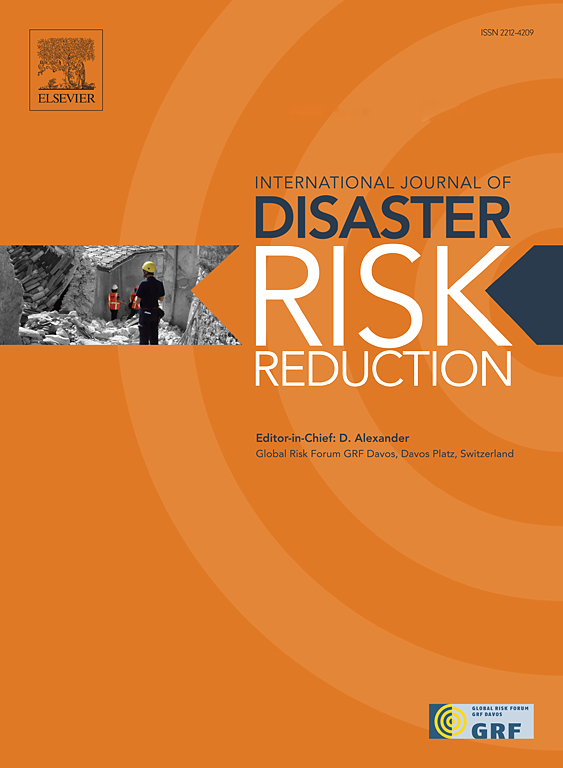Evolving disaster resilience in the Philippines: Insights from the 2021 and 2023 World Risk Poll on socio-economic, regional, and systemic factors
IF 4.2
1区 地球科学
Q1 GEOSCIENCES, MULTIDISCIPLINARY
International journal of disaster risk reduction
Pub Date : 2025-03-18
DOI:10.1016/j.ijdrr.2025.105415
引用次数: 0
Abstract
The Philippines is consistently one of the world's most at-risk countries due to its location within the Pacific Ring of Fire and the “typhoon belt”. However, resilience at national and regional levels remains understudied, particularly in relation to socio-economic inequalities, gender dynamics, and governance. This study addresses this gap by analyzing resilience trends from the 2021 and 2023 World Risk Poll (WRP) Philippines dataset, focusing on the influence of gender, urbanicity, and income across individuals, households, communities, and society, using statistical and data analysis tools. Results reveal a general decline in scores, with sharp drops in Region 4B (MIMAROPA–highest resilience) and Region 7 (Central Visayas–mid-range). Conversely, Region 13 (Caraga–lowest) and Region 5 (Bicol–mid-range) improved, reflecting the success of community-based disaster risk reduction initiatives and governance. Gender disparities narrowed, with women scoring higher in household and societal resilience, while men excelled in community resilience. Urbanicity showed no significant association, although urban areas had higher individual and household resilience, while rural areas demonstrated stronger societal resilience. Income disparities persisted, with higher-income groups consistently achieving greater resilience, particularly at individual and household levels, due to better access to resources and opportunities. These findings emphasize the need for targeted, evidence-based strategies to build resilience in vulnerable regions in the Philippines, informing inclusive policies, equitable resource distribution, and governance collaboration. While the WRP provides valuable insights, reliance on self-reported perceptions highlights the need for further mixed method and longitudinal studies. Lessons from the Philippines thus offer globally relevant strategies for building resilience in disaster-prone regions.
求助全文
约1分钟内获得全文
求助全文
来源期刊

International journal of disaster risk reduction
GEOSCIENCES, MULTIDISCIPLINARYMETEOROLOGY-METEOROLOGY & ATMOSPHERIC SCIENCES
CiteScore
8.70
自引率
18.00%
发文量
688
审稿时长
79 days
期刊介绍:
The International Journal of Disaster Risk Reduction (IJDRR) is the journal for researchers, policymakers and practitioners across diverse disciplines: earth sciences and their implications; environmental sciences; engineering; urban studies; geography; and the social sciences. IJDRR publishes fundamental and applied research, critical reviews, policy papers and case studies with a particular focus on multi-disciplinary research that aims to reduce the impact of natural, technological, social and intentional disasters. IJDRR stimulates exchange of ideas and knowledge transfer on disaster research, mitigation, adaptation, prevention and risk reduction at all geographical scales: local, national and international.
Key topics:-
-multifaceted disaster and cascading disasters
-the development of disaster risk reduction strategies and techniques
-discussion and development of effective warning and educational systems for risk management at all levels
-disasters associated with climate change
-vulnerability analysis and vulnerability trends
-emerging risks
-resilience against disasters.
The journal particularly encourages papers that approach risk from a multi-disciplinary perspective.
 求助内容:
求助内容: 应助结果提醒方式:
应助结果提醒方式:


